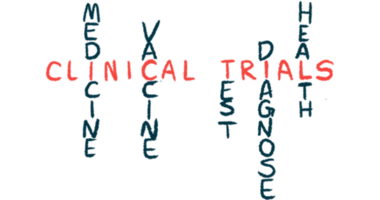Beqvez shows long-term safety, efficacy in adults with hemophilia B
Gene therapy reduced bleeding episodes for up to 6 years in Phase 2 trial

Beqvez (fidanacogene elaparvovec-dzkt), a one-time gene therapy developed by Pfizer that was formerly approved for hemophilia B, was found to be safe and effective in reducing bleeding episodes and the need for factor replacement therapy in a small group of men.
That’s according to results from a long-term Phase 2 trial (NCT03307980), which followed 14 adult men with severe or moderately severe hemophilia B for up to six years.
“These results offer hope that gene therapy for hemophilia B has the potential to transform the standard of care, offering a future with greater independence and improved quality of life for hemophilia patients,” Benjamin J. Samelson-Jones, MD, PhD, a lead study author and physician at Children’s Hospital in Philadelphia (CHOP), said in a press release.
Results were detailed in a study, “Fidanacogene Elaparvovec for Hemophilia B — A Multiyear Follow-up Study,” published in The New England Journal of Medicine. The Pfizer-supported study was conducted by researchers at CHOP and Royal Prince Alfred Hospital in Sydney, Australia.
Hemophilia B is caused by mutations in the F9 gene that impair the production or function of factor IX (FIX), a protein needed for the blood to clot. This leads to the excessive or spontaneous bleeding episodes that characterize the disease.
Replacement therapy, which involves supplying a version of the missing FIX, is the mainstay treatment for hemophilia B. It may be used to prevent or reduce the frequency of bleeding episodes or to treat active bleeds.
Beqvez one-time gene therapy that delivers naturally occurring version of F9
Beqvez was a one-time gene therapy designed to deliver a naturally occurring version of F9, called Padua, that encodes a form of FIX whose clotting activity is up to 12 times higher than that of the regular protein. The gene is packaged inside an adeno-associated virus that delivers the therapy to liver cells, following an intravenous (into-the-vein) infusion.
Although the therapy was approved in the U.S. and other countries, Pfizer recently decided to stop its development and commercialization for several reasons, including the limited interest in gene therapies from people with the disease and their physicians.
A previous Phase 2 trial (NCT02484092) assessed the safety and efficacy of Beqvez in a group of 15 men with severe or moderately severe hemophilia B.
Results from 10 patients followed for about one year demonstrated that Beqvez was generally safe, with no serious adverse events being reported in the first year after treatment. Additionally, the treatment led to a sustained increase in FIX activity, resulting in a reduction of annualized bleeding rates and the use of standard factor replacement therapies.
After one year, patients could enroll in a five-year follow-up study, whose findings have now been reported.
Four patients experienced serious adverse events over the course of follow-up. However, no major adverse events were directly related to the therapy. Some patients experienced mild and temporary elevations in liver enzyme levels, which were effectively managed with medication.
FIX activity levels sustained in most patients after gene therapy
Most patients who received the gene therapy maintained FIX activity levels. Four to six years after treatment, mean FIX levels ranged from 7.4% to 44.2%, corresponding to the mild hemophilia range.
The reduction of bleeding episodes, from 8.9 episodes in the year before the treatment to 0.4 in the first year after treatment, also remained consistently low for up to six years following dosing. Ten patients had no bleeding episodes requiring treatment during follow-up.
Five patients had bleeding events, usually spontaneous joint bleeds at times when the most recent measure of FIX activity level was less than 25%, which were effectively controlled with FIX replacement therapy.
Also, no bleeding events beyond the expected blood loss associated with surgery were seen in a total of 13 surgical procedures performed.
“Among the 14 participants followed for more than 1 year, the therapy led to a sustained clinical response and generally no or low-grade adverse events, which suggests possible long-term clinical benefit,” the researchers wrote.







